Have you always thought it would be wise to be better prepared for emergencies but don’t where to start? This prepping basics emergency preparedness checklist walks you through all of the basic disciplines you need to consider and links to more in-depth information for each area. Use these prepping basics as your go-to guide for emergency preparedness and when you’re done, you’ll be ready to handle events that could happen in our future.
Prepping priorities
Before we start, it helps to identify what you need to prepare for. When we visit preparedness sites, sometimes we’re immediately struck by the enormous loads of things to buy, do, and learn. Almost from the start, you are hearing about WROL, battle rifles, ammo counts in the thousands, pressure canners, INCH/BOB bags, and primitive skills. World- and nation-altering events such as nuclear war, internet-ending viruses, the Great Reset, and the like pop up.
They all have their places, but sometimes things get missed and it can make for a very overwhelming introduction. It can make it hard to prioritize where to spend our time and financial budgets even for those with experience and years of exposure to the prepared mindset.
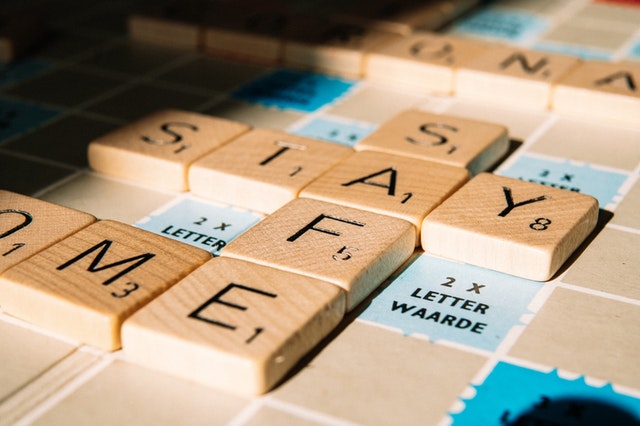
To make it a little easier to prioritize, we can look at what is most likely to occur in the near future and our lifetimes, and use that information to help us decide where to focus our time, efforts, and resources on prepping basics.
Daily Occurrences
Daily emergencies are those that strike somebody somewhere every single day in our English-reading modern life. While some affect larger groups, these tend to be personal or family-related items. They’re the kinds of things the neighbors might not even notice. Some examples are:
- Layoff, cut hours, cut wages
- Major bills (roof, medical, HVAC, veterinary)
- House fire
- Major injury/developing disability
- Theft, burglary, mugging
- Vehicular accident & malfunction (temporarily removing transportation)
- Temporary power outages (hours to 1-3 days)
Seasonal/Annual Occurrences
These are the things we can consult our Almanacs and insurance companies to consider. They regularly tend to affect a larger number of people. It might be a block or a street in some cases, parts of a town or county, or might impact a whole state if not a region. They’d be things like…
- Busted water mains with Boil water orders
- Hurricanes, tornadoes, earthquakes, extreme cold or heat
- Wildfires, thunderstorms
- Temporary outages (2-5 days)
- Active shooter or bomb threat, terrorist events
5-10 Year Occurrences
These are the things that happen regularly, but infrequently. Some occur on cycles. Some, as with the natural disasters above, are a nearly predictable cycle. Some aren’t predictable, per se, but as with tornadoes in one of the nations’ tornado alley or hurricane-prone areas, you learn to expect them.
- Mudslides
- Drought (personal & widespread impacts)
- Widespread livestock illnesses (such as the avian diseases that pop up regularly)
- Temporary outages (3-14 days)
- Fuel cost cycles
Generational Occurrences
The span covered by the term “generation” tends to change if you use the strictest definitions. Most account for a generation to cover about 20-30 years. Some examples of things that very much tend to be generational include:
- Major wars (mental & physical disabilities, income effects good & bad)
- Recessions, depressions
- Fuel cost cycles (more extreme)
- Serious multi-year “weird” weather (droughts, floods, late or early springs)
- 25- & 50-year flood levels
Lifetime/Eventual/Possible Occurrences
A lot of these are going to affect not just a region, not just one nation, but many. Some of these are also the big-fear “gotcha’s” or clickbait types that seem to draw folks in.
Some are truly believed in, and I try not to judge people on what they believe. Poles have shifted in the past, Yellowstone has erupted, we’ve had serious solar storms that affected power, and asteroids have struck our earth. Will they happen again in our lifetime or eventually? Some almost certainly. Some are a firm “maybe”. Some are … possible.
- Great Depression
- Devastating Midwest seismic activity
- National or global pandemics (COVID) in the Western world
- Significant volcanic eruptions (the atmosphere-blocking ash type)
- EMP, devastating solar activity.
- Nation-crippling electronic-based virus(es)
Fact is, most of us will experience something from the first tier or two in our lives at least once, and for some of us, they’re regular parts of life. In many cases of upheaval and crisis, we’re still going to want electricity, most likely.
We will still have a job or need to find a new one, will still be expected to present ourselves showered and have money to receive services, will still have doctor’s appointments, hunting and squatting in national parks will still be frowned on, and combat gear in the streets will still be the exception rather than the rule.

In some cases, the duration of our life-altering events might only be a few hours or days. However, in many parts of the world, those hours or days can be seriously inconvenient if not downright deadly. The ability to keep a CPAP machine running, repair a down or wrecked vehicle, and continue with life after a squirrel invasion or a tree comes down is just as important as defending the home from looters and making beeswax candles.
Being able to repel the zombie horde does me little good if my vehicle is in poor repair daily and leaves me stranded on my way to work. 5K-10K rounds of ammo multiplied by my 7 platforms sound nice, unless I don’t keep oil, coolant, jumper cables, and fix-a-flat or a mini air compressor in my vehicle so I can limp my way home to them safely – daily.
Prioritizing your prepping basics instead of jumping willy-nilly – and tracking what prepping supplies I still need instead of continuing to add to whatever my favorite prep stash is – can help prevent daily disasters from truly causing upheaval.
Common prepping mistakes

So you have this prepping thing down, right? You have plenty of prepping supplies to weather any contingency and there isn’t much left that you haven’t purchased or thought of. You and your family have every base covered, every T crossed, and your stuff doesn’t stink. Congratulations! Now, you have joined an elite group of people who have stuff. Now what?
Have you made any prepping mistakes?
When Preppers believe that they can finally sit back and relax that is when we can become complacent. If we let this go on long enough we aren’t going to be too much better than someone who hasn’t prepped at all. If you let your guard down or think you are “finished” prepping, you can make mistakes that could affect your family or your group adversely and we never want that to happen.
Forgetting to Rotate your supplies
Most of us acquire our survival food from several different sources. It is wise to have a good mix of long-term storable foods like dehydrated or freeze-dried food that can last years. Then we have food that has a few years shelf life like grains or canned vegetables (just speaking in generalities here) and perhaps MRE’s and Mainstay bars to add into the mix.
Lastly, we have our store-bought foods that you can purchase at the local grocery store and then the freezer and fridge. It is easy to see a stocked pantry and sit back with contentment about how you are preparing to feed your family. I know because I have fallen into this trap also. The food you have stored is great, but you have to rotate your food storage of it to truly have the longest shelf-life and highest capacity for nutrition.
Foods from the grocery store are the easiest to apply this principle to, but the mechanical part of making this happen isn’t always the easiest. Any foods you purchase should be used and resupplied with the FIFO process. FIFO simply stands for First In First Out. Pretty simple and everyone realizes this, right?
Forgetting to resupply
How many of you have taken your First Aid kit along with you on a camping trip and had to use it? This has happened to me and I was thankful I had the supplies I needed to treat minor injuries. The people who I treated appreciated it also, but what happens when you use supplies? They need to be restocked.
If you are using your prepping basics, that is great for a lot of reasons. You are prepared for contingencies first of all and gaining practice and familiarity with your provisions. Don’t make the mistake of using all of your rice and not buying any more though. If a storm comes along and you have to use your spare propane tank, make sure you get a replacement as soon as it is feasible.
If you have used your spare fuel to refill the lawnmower, go get that backup fuel tank filled the next time you are out.
Not knowing how to use your preps

This is probably the biggest prepping basics mistake we can make because it can cause us to act recklessly in the future. Let’s say you purchased a big new yacht and you took it out for its maiden voyage, would you want to know how to work the lifeboats or would you just be content that they were sitting right there on the deck?
Having lifeboats is great, but if your new toy hits an iceberg in the middle of the night and you are up there trying to read the user manual when you are tired, scared, maybe it’s raining too, will you regret anything?
Tools are necessary, and they have a place in everyone’s preps. Would it be ideal if you were Bear Grylls and could just use your survival mirror to catch some twigs on fire to survive? Yes, but knowing how to use your firesteel striker or even a lighter to build a fire in the first place is important too.
A lot of us have purchased a grain mill and hundreds of pounds of hard red winter wheat, but have you ever ground that wheat into flour and cooked with it? I have and for starters, I was surprised at just how long it takes, and I have a decent grain mill. Maybe I was doing this wrong, but I had to run everything through the mill a couple of times and keep adjusting the grinding stones so that the consistency of the flour was right.
This may not be a life-or-death lesson, but I did learn more about grinding than I thought I knew going into it. The same could be said for canning. If you buy a dozen cases of Ball canning jars and lids and a big old pot, but you have never canned, you may be in for a rude awakening. We have had a couple of canning mishaps that caused us to eat more veggies than we were planning on, but it taught us invaluable lessons. Like, don’t start canning red beets in a pressure cooker at 10 at night if you plan on sleeping anytime soon.
If you have firearms but haven’t ever been to the range to become proficient with them, they may end up being worthless to you when you need them. When you really need a firearm, you want to know how it works instinctively. Can you feel if the safety is on even in pitch-black darkness? Do you know how to reload or clear a jam without looking at your firearm?
How to convince someone about prepping

When I started to “wake up” to the realization that our society is fragile and notice the everyday threats that I was ignoring, the first person I wanted to tell was my wife. I didn’t break it to her slowly either. I think I read a few books and did a ton of research on the internet and then one night as we were getting ready for bed, I hit her with my whole list of concerns and all of the prepping basics we needed to purchase before the grid went down.
This did not go over well, as you might expect. My wife pretty much looked at me and said, “That’s crazy”. It was my first attempt at convincing someone else (who I cared for) about the need to prepare and I failed miserably. The sting was worse because if anyone would understand and support me it would be my spouse, right? Wrong.
Convincing someone of a new or completely foreign concept is not an easy task. Especially when that concept, like preparing for a disaster takes them well outside of their comfort zone, costs a lot of money, or could cause them embarrassment in some way.
Understand your audience
Understanding your audience is a key factor to consider anytime you are having a conversation in which you are trying to persuade them to your point of view. The more you know about a person the better you will be prepared to discuss prepping with them in a way that is going to keep them comfortable and open to conversation. Some of this plays out for me in subtle ways like asking leading questions or using current events to sell a point.
If I had a co-worker that I wanted to talk to about prepping I would first wait for the right opportunity. If a situation presented itself, like the recent massive power outages in Texas, and the subject came up you could broach being prepared with them. How you do that though is going to be different than how you would be with your brother or sister. Try to match your fervor and energy level to the level of interest you perceive in the person you are talking to. Actually, I try to keep my tone one step below where they are at. Here is an example.
Your co-worker comes up to you and brings up hurricane X and how tragic it was that people were without power for weeks and had to wait in gas lines. You could offer words like “I feel sorry for them. That’s why I have some extra gas stored for emergencies” because “you never know what could happen”. I think it’s important to say this with a humble attitude and not a “those people are idiots” tone.
This may lead to other questions or it may die right there, but you left the impression on your co-worker that someone has thought about things like this and won’t be as out of luck if the same scenario were to happen to you. They may come back to you later with other questions or this could just be a spark that gets them thinking. Sometimes I think that the first step to thinking about prepping is hearing that someone you know and respect is thinking about the same thing already.
Focus on the need, not the reason
Many times, I have tried to convince my spouse of the impending doom or disasters lurking around the corner and I believe that in some cases this isn’t the best approach. My wife would have one of two initial reactions to my conspiracy theories or inflated statements about the quickly approaching end of the world.
First, she would want to convince me that I am wrong about whatever my subject was. My wife is very smart and knows a fair amount of history so she has a wealth of knowledge to draw upon which takes us further away from where I am trying to go. In my mind, I am only trying to get her on board with my prepping. But by telling her some of the reasons (the more alternative reasons) for prepping, she forgets about the need and focuses on debunking my theories.
Secondly, she did not want to believe that anything is hopeless. For her, if we truly were headed for a disaster or economic collapse, what was the point in trying? In this situation, rather than convince her what we need to do to live, I was making her feel more helpless. My job was to reverse that thinking quickly.
I have learned through many of these discussions that my wife simply doesn’t have the same view on a lot of things that I do but that is perfectly fine. She can easily see the benefit of having food after watching the shelves empty after the COVID scare. She can appreciate having a few dozen gallons of gas when the gas station pumps are no longer working. She can imagine going without toilet paper because we don’t have any and the stores are closed or having to have an alternate plan for cooking if the power is off.
It is sometimes easier to let the person you are trying to convince think about the end situation you are describing (hunger, gas rationing, cities on lock-down) than the potential reasons for these scenarios.
After several arguments about the various forces I believe are conspiring to create our very own SHTF future, I switched tactics. I didn’t try to convince my wife about zombies coming to eat everyone’s brains out, but I used real people reacting to real natural disasters to highlight what I wanted her to understand. When you can see on TV people who aren’t prepared and imagine how they must be suffering it is easier to picture yourself in that same situation.
What I had been struggling with was not as big of an issue anymore. My wife started to imagine her family being without food because the power was out or the roads were closed and then me stocking up a month’s worth of food wasn’t such a big deal anymore.
Be happy with small victories
If you have someone in your life that you really love and are concerned with, you have to look at everything as a work in progress. Your marriage is not something you put a day’s worth of work into and then spend the rest of your life coasting. It is similar sometimes with prepping. You may be able to agree on storing up a month of food or making sure you have plenty of stored water, but firearms for security takes a lot longer. They may be perfectly fine with you building your own Get Home Bag but balk at you wanting to get a concealed carry license.
Expect that you may not win this person or any person over immediately, but your actions and the way you live your life will be viewed over a period of months or possibly years. If you can get your parents to purchase a firearm for their security, but they think you would be insane to store any food, be happy they have a gun. Don’t discount everything because they aren’t riding next to you in your bug out vehicle with full-on camo ready for the end of the world.
Like I said everyone has different views and priorities. You should be steady in your convictions, loving in your concern, and let them see that you take this seriously. Over time, the people you are trying to convince will see how you act. It will ultimately be up to them to choose how they want to live.
At the end of the day, your job should be to prepare yourself and your family. Part of that responsibility as a leader is to get people on board with you. It may not happen overnight, but you have already decided to do everything you can to survive, right? You must have the same conviction with the people you love. Never give up on them and always be there if they need you.
What you carry every day is your first Preparedness tool
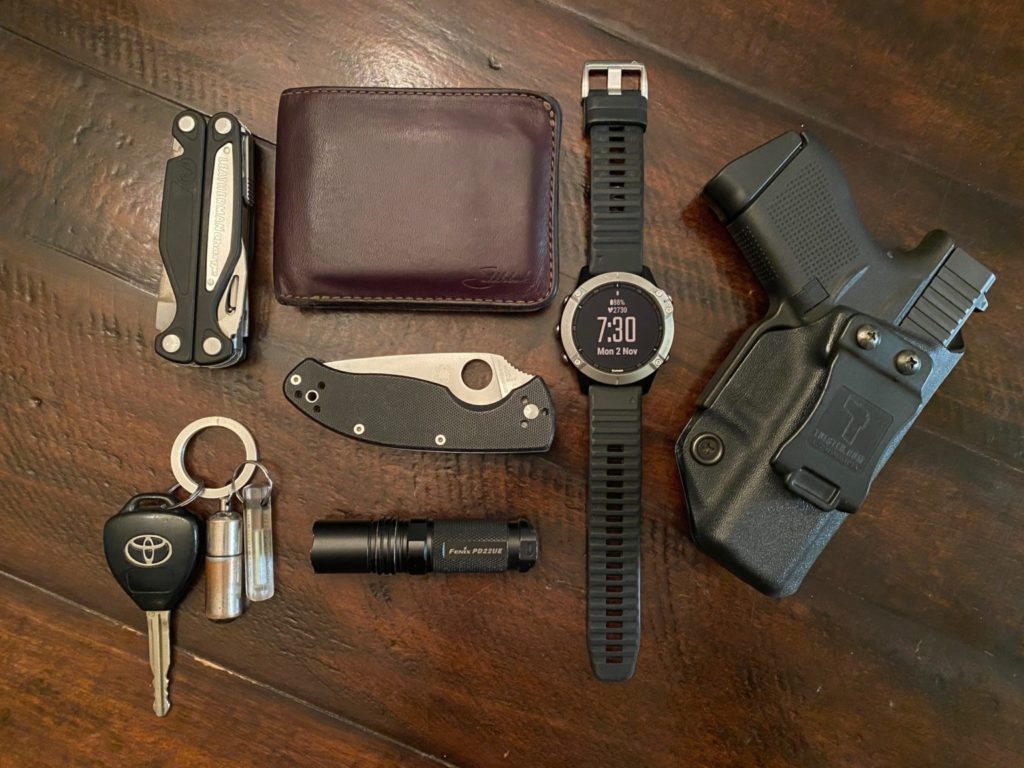
Everyday carry items are up close and personal prepping items that each of you should have access to anytime you leave the house. They are tools that can be useful in a myriad of situations, but most importantly, they all share one or more lifesaving properties when used in the right context. Most of us don’t walk out the front door without our keys, wallet, and cell phone but there are other EDC items that you should consider if you want an advantage over the next guy when your life is on the line.
What is everyday carry?
Before we get deep into the specifics, we should start by defining the context of what everyday carry means. Very simply, everyday carry, abbreviated as EDC is gear that you carry with you every day. There are many ways to look at this and levels to everyday carry that can vary according to your specific circumstances. For instance, a woman who works as a delivery driver may need different everyday carry items than a man who has a desk job in a local government office.
Everyday carry items
There are a lot of items people can carry and they are detailed more in our full article about EDC, but here are the basics. This list does give us a place to start from though, so here they go in no certain order:
Walking out the door going to work, I always have:
- Keys – which contain a small FireStash lighter
- Wallet
- Cell Phone
- Watch
- Knife
- Flashlight
- Spare (Emergency) Cash
This list above is what I consider as the basic EDC items you should have on you wherever you are. Yes, a handgun will always be better to have on you. Especially, if you need it, but sometimes it is not practical. Sometimes, it’s not legal to have it on you even with a concealed carry permit.

But what about this list of everyday carry items that can save your life? These are the basics. Keys, an obvious necessity if you have a vehicle are needed if you want to drive away. Keys can also be used as a defensive weapon in a worst-case scenario.
Knives are useful for self-defense. They can also be used to cut and slice a lot of things and a knife is one of the most basic tools that you never want to be without. Having a light to see in the dark and a way to make fire are obvious necessities.
Making sure your home is prepared
Now we have the basics for preparedness laid out, your own personal decision matrix, and some personal accountability with your EDC, next up is larger prepping basics for your home. One of the reasons why it’s crucial to get your significant other on board before you start acquiring and stocking some of these items.
Food Storage
I wanted to share tips for how to stockpile food for emergencies that anyone can use. I will focus on preppers who are just starting out, but I think some ideas in the topics below could be useful to anyone looking to ensure their family has food and does not go hungry. This article will also have dozens of links to other content on the subject for additional reading.
I believe there are 5 main components of survival that everyone needs to consider. They are simply Water, Food, Shelter, Security, and Hygiene. I will cover each in this Back to Basics series. Last week we talked about the need for water and how you can easily store water for emergencies that render your traditional methods of obtaining water impossible. Water is more important to life than food or at least you can live longer without food than you can water, but they are both important.
Why do you need to stockpile food for emergencies?
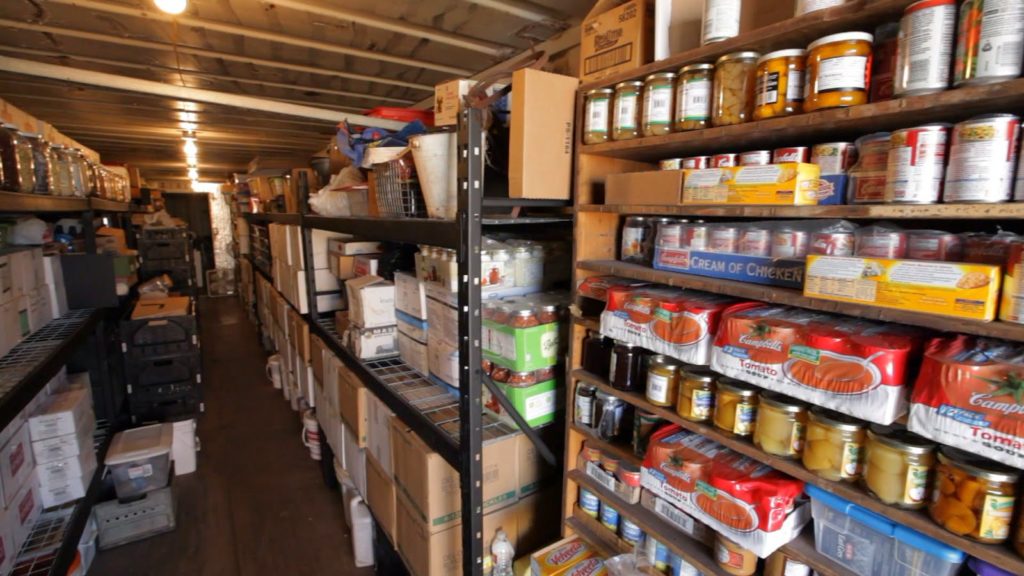
If you are new to prepping, you may have something that triggered your awareness of the subject. Preppers have many reasons for doing what they do and no two preppers are alike. Some are preparing for the end of the world, but most see situations in our daily lives that give a perfect reason to stock up supplies. You have only to look at the recent winter storm that affected large swaths of the Eastern Seaboard to have a perfect example of why you don’t want to be left without a means to feed your family.
It seems almost cliché at this point, but invariably it always happens when a winter storm is forecast. Everyone rushes out to the store and certain food supplies are wiped out. Images of empty shelves are shown on practically every newscast and eventually prepper websites. Food shortages during simple storms are common if not expected. We don’t really even blink anymore because we are so used to this practice of waiting until the last minute and then hitting the local grocery store on the way home from work to grab some basic necessities or comfort food.
If you can’t live for more than 3 days without going to the store, it’s time to reevaluate your family’s readiness. The statistic we hear most of the time is that the average home has only 3 days’ worth of food in it. If this is true, where would you be on day three if you had not been able to make it to the grocery store before the storm? What if instead of a snowstorm, a virus outbreak had occurred and everyone was told to stay indoors to prevent infection? Each of us should have more food on hand that our families and friends will eat than is absolutely necessary to prevent surprises from leaving you hungry.
How much food do you need to store?
In the example above I used a virus outbreak as the condition that would prevent you from getting to the store. There are others though and the weather could certainly be one of them. Some storms where I live have left roads impassable for upwards of a week. Could we walk to the store? Sure, but what if the stores having already been cleared of just about all of the food were closed? What if power outages prevented them from conducting any transactions? These are things you should consider.
Prepping is not something I ever consider you can accomplish. By that I mean, you are never going to be fully prepared. You may be much better prepared than some or all of the people around you, but you will never be 100% self-sufficient. Prepping should be done incrementally even if you have more money than you know what to do with because as you start to stock up food you learn lessons.
A good rule of thumb for me is to start small when you are beginning to stockpile food for emergencies. You don’t need a year of freeze-dried foods to start with. Try just having a week or two of extra groceries that your family already eats. This is accomplished without any exotic storage needs usually or 5-gallon buckets of grains you have to figure out how to prepare.
My wife purchases the groceries and I started out by giving her extra money to simply buy more food. I did this in the beginning because she is a much better shopper than I am and will always save more money than me. This worked great because she was easily able to fill our pantry and had plenty of meals planned to last us well over 30 days. Sure, at the end of that 30 days of food we would be getting into more exotic cans of mushrooms and soups that are better left as part of a recipe as opposed to your entire meal, but we wouldn’t starve.
What are the best types of food to stockpile?
Once we had a month worth of food and water stored up, I started looking at other options. I think each person should have a layered approach to food storage. This gives you flexibility and more importantly variety that as you go out to 6 months or 1 year or 2 will be important. My own personal goal is 2 years’ worth of food stockpiled for my family but that isn’t made up of only food from our grocery store. That can certainly be done though with a very good rotation plan.
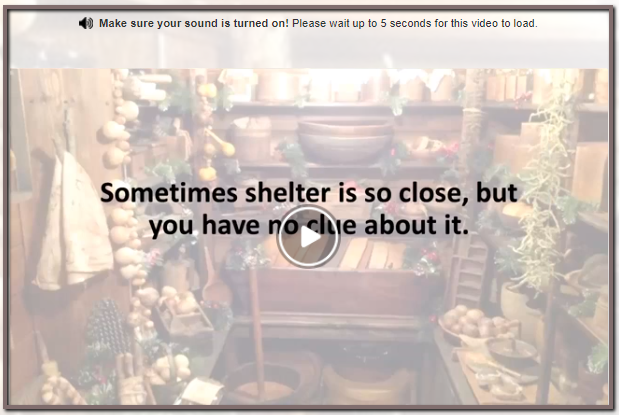
Food storage should ideally cover the following:
Short Term Food Storage – The best and simplest foods are like I said above, what your family eats every day. One thing to consider is that the bulk of this food should be non-perishable in case you lose power. Canned foods are great as well as pasta, drink mixes, and staples. These usually last at least a year.
Medium Term Food Storage – For the 5 – 10 year range MRE’s are a great option although they are heavier and their convenience comes at a higher price. I have several boxes of these and I like MRE’s because they are self-contained and don’t really need any water. Freeze-dried camping foods like Mountain House are another great option to just add hot water to. Rice and beans make great additions to this category because you don’t really have to do anything crazy to store them as long as they are kept cool and dry.
Long Term Food Storage – When you start to look at foods that will keep for many years you get into stored grains like Hard Red Winter Wheat that you store in sealed 5-gallon buckets. Freeze-dried food from any one of many suppliers out there keep for 20 years usually and are individually wrapped in Mylar packets. They require water to re-hydrate but the taste can be surprisingly good. Make sure you have seasonings though….
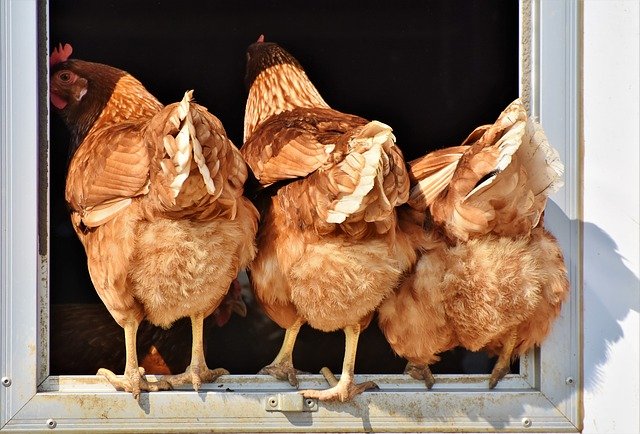
Renewable Food Storage – This is when you have to get your inner farmer working. Renewable foods are an intensive garden, small livestock like chickens or rabbits, and the occasional wild game caught either through hunting or snares. In the worst disasters, your food will run out so having a plan for that ahead of time will help you prepare.
Stockpiling food is only the start of your food preparation. We have a garden and a small flock of chickens. The stored food is just to get us through the worst of the disaster. Hopefully, before our food runs out whatever disaster has happened will be mitigated and life will have returned to some sense of normality. If not, we have a huge leg up that will allow us to further harvest our garden to put away food like the pioneers had to do. It is an approach that gives us some sense of security and prepares us to come out on the other side still alive.
Water Storage and Filtration
Why is it important to know how to stockpile drinking water?
The simple answer to that question is one that you probably already know. We all need water to survive and if you go without water for a while your health deteriorates. You can get headaches, become lethargic and weak. Go with water for more than a couple of days and you die. Water or lack of sufficient, clean drinking water, more than almost anything else (I will go into the other things later) will kill you.
That much is pretty simple. Usually, everyone can accept that premise without even blinking an eye. What they frequently have problems with is this idea that you could ever find yourself without clean drinking water. We in virtually all of the developed world have water treatment facilities, plumbing, and systems that bring clean water inside the house or our offices and you would be hard-pressed to walk anywhere in even the smallest cities without quickly finding nice clear, plastic bottles of water for sale.
But what if the water in the tap was tainted? What if the tap no longer put forth clean, shiny water? What if the stores with all of those bags and bags of bottled water were empty? This is where prepping and the need to stockpile water for emergencies begins.
To prepare, you have to do something proactively.
How much water should I stockpile?
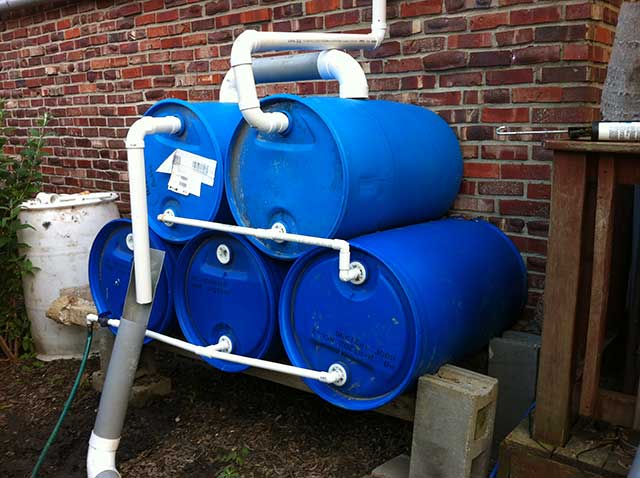
So we agree that everyone needs to stockpile water, but the next obvious question is how much water should I stockpile? The amount of water you need varies greatly depending on a few different factors. A general rule of thumb is that you need one gallon of water per person per day.
This one gallon per day rule of thumb assumes hydration needs and hygiene. You won’t necessarily drink a gallon of water, but you might need it for reconstituting freeze-dried food, cleaning cooking implements or washing your body. On some days you might not even need a gallon of water. Other days you could end up needing much more than one gallon. If you are exerting yourself physically or the temperatures are elevated and you are losing fluids to perspiration.
In my opinion, water is one of the easiest preps to cross off your list and since it is so vital, it made the cut as the first in this series. To calculate how much water you need, just multiply the number of people you are prepping for by the number of days you want to be stocked up for.

In my family, I have those who live with me (4) as well as extended family who I plan will come to our location (another 4 potentially) as well as some friends (add 4 to that) so I am looking at potentially needing to supply water for 12 people. 12 people for one month is 12 X 30 = 360 gallons of water.
That is only for one month. What if the emergency lasts longer than one month? What if the town’s water supply is still not safe for drinking at that point? 360 gallons take up a lot of room no matter how you look at it. If you have 55-gallon barrels in your basement that is still 6 barrels and again that assumes everyone is staying at or under their one gallon a day limit.
Where is the best place to stockpile drinking water?
I have a few different ways to store water. The first is stored in heavy-duty plastic containers that hold 7 gallons each. These are great because they are more portable, they are stackable and I can get some storage in smaller spaces, like the shelves of a pantry. I can also easily transport a few of these to my Bug Out Vehicle if necessary. This storage only lasts a week.
After that, I have rain barrels that hold 50 gallons apiece. The great thing about rain barrels is that they can be refilled by Mother Nature without you having to do anything except make sure the water is disinfected. But, this requires an outside location and not everyone has a home on land where they can back up a barrel under the gutter. People who live in apartments have different space limitations.
For apartment dwellers, I would recommend using the stack-able storage, but diversify that around your apartment so you don’t have weight all in one space. Usually, any apartments are built on concrete substrates so even several hundred pounds of water in a closet wouldn’t risk compromising the floor. You can also try storage facilities if necessary.
What do you do when the water runs out?
But no matter how much water you have stored up, it could still run out in the worse emergencies so it is important to have an alternate plan to acquire good water afterward. Actually, I think it is more important to plan to procure water than it is to stockpile it in the long run.
Water-borne bacteria and viruses are not something you want to encounter in a disaster situation. Stomach bugs, even minor can put you down and give you diarrhea. Who wants to worry about getting sick when the world ends much less crapping yourself all the time when the toilet paper is in short supply anyway? A simple and reliable method of making your water safe to drink is also very important.
Boiling water is a sure-fire way to kill all bacteria and viruses. The drawback to this approach for me is that you have to start a fire and use a container. The fire could alert people to your location and that might not be what you want. Also, you have to wait for the water to cool before you can drink it and boiling isn’t going to get out any sediment, it will just make your water safer to drink.
I think the best water filtration for survival is gravity filters and I prefer gravity filters for their ease of use, compactness, and filtration ability. With a filter like the Platypus Gravityworks, you can quickly filter 4 liters of water just by filling up a bag and it’s ready to drink in minutes. Literally, I filtered 2 liters in less than 2 minutes.
There is also using bleach to disinfect, water purification tablets, and even iodine, but these aren’t without their drawbacks too, and do require you to wait for the chemicals to work. Your choice, but there are options.
Make sure you have plans to supply the water needs of your own survival group at the initial point of any emergencies and long after by crafting your water preparedness plan now.
Home Defense

The overarching goal of prepping or survival is to stay alive, but the disciplines that feed into Survival could be broken simply into food, water, shelter, self-defense, and first aid. There are many other branches but is a simplistic way of looking at priorities. Self Defense is one that has more urgency, and our home fortification plans are some of the most important parts of initial survival we can discuss.
How should you think about Home Fortification?
When I think of home fortification it is always from the lens of buying time. In the case of a burglar when I am not home, I want them to walk away without gaining access. If I am home, I want my home fortification preps to give me time to get a firearm and prepare to deal with the threat.
I do not look at any structure that I have or could build as being an impenetrable fortress that would hold off a horde of rioters or some gang. With enough time, a dedicated force will get into your home or destroy it with you inside.
We can make our homes harder to get into certainly and that is easy to do, but it will not turn your home into a medieval castle. Any steps I take that can first alert me to the fact that someone is outside trying to get in and then as a bonus buys me time to act are enhancing our security.
Thinking of Home Fortifications in layers
For defense we are not concerned with people inside our house normally, it is those outside trying to get in. Working from the most important to the least, the first layer of defense begins with your actual home and any access/entry points someone could use to get in.
You may be thinking, why not your property edge? Wouldn’t you want to know if someone was in your yard well before they were at your door? Yes and No. Yes, it would be helpful to know if someone is in your yard, but they could be in your yard by mistake. They could also never try to get into your house.

The flip side is that to me, it does not matter if you know they are in your yard, but they can walk up and kick in your door. Knowing they are coming is not the most important thing to worry about. Preventing them from getting in as long as possible is more important to me.
- Security Cameras – Why a camera system? Purely for advance warning, some documentation evidence should you need to give something to authorities and to large extent the deterrent factor. A security camera allows you to see who is coming to your door. There are many options for security cameras out there with options on battery vs wired, Wi-Fi vs cable connected, and on-premise storage vs in the cloud. Many now even let you hear and speak to the person at the door.
- Steel Doors – But the security camera is only one piece, the physical door is the real weak link. When you consider what holds the door secure to your house, the connection points are very thin. Wood doors, especially hollow core wooden doors are less resistant to physical abuse than a steel door. In the US, this is not a solid steel door, it is steel panels wrapped around a frame, but this is a better skeleton for you to start with.
- Making Doors harder to kick in – Most door failures come at the point of the lock housing since the wood and generally, the screws holding the plates into place are not sturdy enough.Enter Door Armor. Door Armor (formally EZ Armor) is a simple to install aftermarket set of thin steel braces that dramatically increase the amount of punishment your door can take by reinforcing the weak points. There are covers for the hinge plates, the lock cores, and the jamb itself along with 3 ½ inch screws.
- Window Film – There are many security window film options out there and if you install it yourself, you can save money. Window film has an adhesive backing, so you install it just like a window tint for your vehicle. It takes patience, but it is easily a DIY project. If you can operate a rubber squeegee and a squirt bottle you should be fine.
- Window Bars – A more conspicuous option, window security bars will keep anyone from gaining entry via your windows. Window guards typically will not stop the window from breaking or a smaller object from entering either. You typically see these in high-density complexes like apartments or ground floor windows in some buildings.
Hopefully, this gives you some ideas on how you can make your home fortifications more substantial with relatively low-cost solutions. If you win the lottery and decide to build that mountain bunker, please send me photos. For the rest of us, absent a total grid down anarchy, the steps above will make your home much safer for you and much harder to get into
Defensive Weapons
There are few things more likely to start a fight than the discussion of firearms and more specifically, what is the best gun for home defense if you are just starting your emergency preparations. There are entire survival forums on this subject alone and if you want opinions, there are lots of places to find them. Similar to the conversation regarding Bugging Out Vs. Hunkering down, there are a lot of options, opinions, and reasons why you should or should not do one or the other given by everyone.
To frame the case for my belief on this subject a little more clearly, I will throw out the disclaimer that when I make this recommendation I am speaking to people who do not have any other firearms currently. If you are realizing just now that you may need a firearm for home defense and are looking for the best weapon to purchase first, this post is intended for you.
For the person who has nothing, I am going to go out on a limb now and describe what I think the best gun for home defense you can purchase “right now” for a lot of various factors. The factors for deciding this weapon are based upon current events and the political climate to no small degree.
To cut to the quick, I will say that if you don’t buy any other weapon, a 12 gauge shotgun is the absolute best option you have right now. I honestly believe that when all else is considered, it is the best gun for home defense. Let the cursing begin! Why do I say a shotgun and not a pistol or machete or AR or AK? I’m glad you asked!
- Cost – A 12 gauge shotgun is about the cheapest gun you can buy when you consider that most handguns now are selling for over $500. That’s if you can even find one now.
- Availability – You know that guns and ammo are flying off the shelves now. Shotguns however do not have the attention of the gun-grabbers yet and they are still more available than other weapons.
- Ease of purchase – Shotguns or long guns generally don’t have the ridiculous licensing requirements that purchasing a handgun does. Yes, you will still have to fill out paperwork, but you don’t have to get a license in many states.
- Ease of Use – A good shotgun is pretty simple; point and shoot.
So for all of those reasons, the 12 gauge is my hands-down favorite for your first defensive weapon for the home. If you have more money, there are a few other items I would recommend for your survival battery of arms, but I will save that for later too.
Health and Sanitation
In thinking about preparing your family for survival after a disaster or emergency situation you can’t forget to consider their health. Your family’s health is affected by so much more than having adequate stores of food. Having the best gun for self-defense is great and important, but what if someone in your group comes down with an illness that could have been easily prevented with a proper survival sanitation plan? What if the killer that attacks you is a sinister little microorganism you never saw coming?
What is Survival Sanitation?
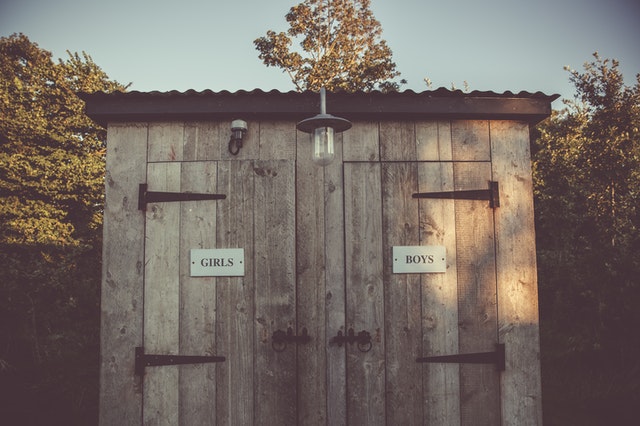
And how is survival sanitation different if we are talking about some disaster? Let’s just make this simple and say that the importance of sanitation has everything to do with getting rid of waste. In a grid-up scenario, most of us have access to a lot of systems to take care of sanitation for us. We have running water, toilets, and garbage pick-up or landfills.
If you don’t have any of those, you probably wouldn’t be on the internet reading this. Those systems do a pretty nice job of getting trash and our waste far away from us and that is important. Without Sanitation, diseases quickly spread.
For example, after the 2010 earthquake in Hati, More than half a million people became ill with Cholera. That disease quickly spread into neighboring countries it was so bad. Cholera is a water-borne disease. In Haiti, where most people lacked public sewage systems or sanitary latrines after the disaster, people often drink from the same water source they use to bathe and defecate.
People ill with cholera develop severe diarrhea and, without immediate treatment, can become dehydrated. Rapid dehydration can cause shock, which can lead to death.
How can we prevent that from happening to us or our families? Several ways, but one primary concern is to make sure our waste isn’t contaminating our drinking water. To do that, we can ensure we have a method to filter our water, but more importantly, we have to have a plan for taking care of good old number 2.
In addition to that, general cleanliness is an important consideration so stocking soap, gloves for dealing with nasty things, trash bags, and disinfectants are smart.
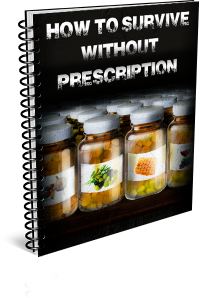
You can read more about survival sanitation in our article here.
Survival Communications
Having a plan in place for survival communication in a disaster or survival situation is important to your preparations. This may be a plan for communicating with your family if you are away. It could entail group communications at a retreat or neighborhood watch scenario or it could be as simple as letting family members know where you are if you are forced to separate?
Taking the time to plan your survival communications now can save someone’s life and make any other plans you have to function more smoothly.
- Solar Powered/Hand Crank Radio – I would recommend that everyone have at least one emergency or weather radio at any of your locations. I keep one stored with my emergency supplies and only have to walk into the other room to grab it out of its box. You do want a radio that is powered by batteries in case the power is out and a nice option is to have either a solar panel or hand crank to power the radio in case you don’t have batteries.
- CB Radios – CB Radios generally have a range of 5-20 miles depending on the terrain. Each channel is a different frequency and channel 9 is the emergency channel. You can listen to channel 9 for news updates and stay in touch with friends or family well away from your home. Some models like the Cobra® 29 LTD BT even have Bluetooth now so you can take calls on your CB. You just need a CB and an antenna and you are in business. Installation is simple and you can talk to anyone who is within your range.
- Scanners – A great companion to a CB Radio is a scanner, sometimes called a Police scanner that randomly scans all of the radio frequency channels. It surfs for you and when it finds traffic, it will stay on that channel during the broadcast. Some scanners hold thousands of frequencies and you can use this to hear what emergency service personnel are saying. You can also hear news before it makes it to the TV. If the scanners are still working and your police department isn’t blocking the frequency somehow you can hear what is happening in other parts of your town and make plans to bugout if necessary.
- Two-Way FMRS radios – Everyone who has ever been to Walmart has seen the FRS radios or walkie talkies. These are great on car trips when you want to stay in contact with another driver in a different vehicle. They are also good for camping trips when one group wants to separate from another group. They do have a much smaller range and this is highly impacted by line of sight. I think on the pair I bought, the range says “up to 23 miles”. Yeah, right! Maybe if you are standing the in middle of the desert and you can see the person 10 miles away.
- Military Surplus – Once again, one of my favorite options (for certain scenarios) is a good old field telephone (TA-312/PT).
Regardless of the method you choose (we have several) it is wise to think about different scenarios and the communication plan you would use to keep in contact with your family. What about Short Wave or Ham Radio? Good question.
I think Ham Radio is an excellent option, but it is a complicated topic with a higher entry cost, learning curve, and commitment which means it’s worthy of its own post. You can read more about Ham Radio here.
Fuel Storage
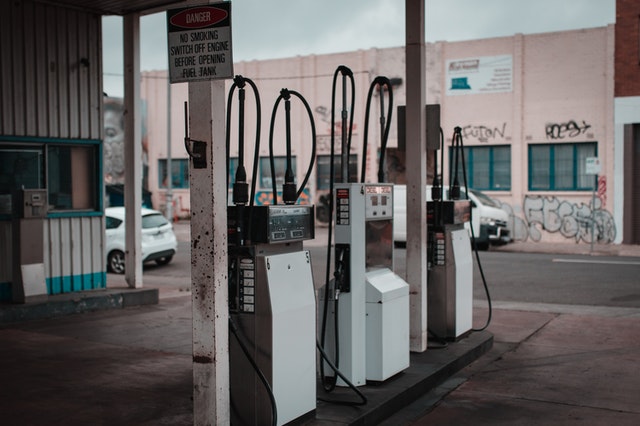
A generator without gas is like a rifle without ammunition. For a generator to be of any use to you outside of a very expensive and heavy paperweight, you need to have a plan to store fuel long term.
This is also the case if you don’t want to end up like millions of people each year who are unable to get gas after a natural emergency like Hurricane Sandy. A good fuel storage plan usually involves purchasing and properly treating a minimum amount of fuel to last you through whatever scenario you are planning for.
This might be fuel for your generators, or enough gas to get you to your bug out location. It is easier to pre-purchase fuel and store it so that in the case of an emergency, you aren’t standing in line. There are a few things to consider when you are planning to store fuel long-term that we will cover below.
What’s the best container to store fuel long-term?
Similar to having water on hand in an emergency; having a supply of fuel in containers that protect the fuel and are easy to carry is important. Could you store gas in thousand-gallon tanks buried underground? Yes, and that is my dream scenario but for now, I and I assume most others will have to settle for something a little more cost-effective and portable.
There are many different types of fuel containers but for gas, the most common style available for sale now is plastic and red in color with a built-in spout of some form. Kerosene containers are blue, Diesel is Yellow and it is important to follow this handy color convention so that you don’t accidentally pour regular gas in your kerosene heater and fry your eyebrows off or worse.
Using Fuel Additives for long-term fuel storage
Gas loses its potency over time and this also applies to Diesel and Kerosene. Diesel for example if stored at lower than 70 degrees will last about 12 months without any additives provided it is kept in a sealed container. If your temperatures are much above 70 that time slips by 50% to 6 months. According to BP,
As diesel gets older a fine sediment and gum forms in the diesel brought about by the reaction of diesel components with oxygen from the air. The fine sediment and gum will block fuel filters, leading to fuel starvation and the engine stopping. Frequent filter changes are then required to keep the engine going. The gums and sediments do not burn in the engine very well and can lead to carbon and soot deposits on injectors and other combustion surfaces.
Now, what can we do to prevent issues like this and protect our fuel because you don’t want to be trying to outrun the mutant zombie bikers from Mars and have your engine stop? Additives. There are two main additives that I have run across, STA-BIL and PRI-G. PRI has several lines of additives and the –G stands for gasoline.
They also have PRI-D for diesel. PRI additives are designed to be added to your fuel on a yearly basis to maintain the fuel in the best condition possible and they even claim that if your fuel has aged already, just adding PRI-G has proven to restore the fuel to “refinery-fresh conditions”. I would rather not test that out but PRI-G does have a decent reputation.
How Much fuel should you store long-term?
Can you ever have too much fuel? I don’t know that you can in a real emergency. If you are unable to get to the gas station or there are rations at the pump you can never have too much. Would 500 gallons be enough? It really depends. If you have a minor power outage that lasts a few days, then you wouldn’t need that much gas at all. If we have the end of the world and there are no gas stations anymore, that 500 gallons is going to be a huge help, but it won’t last forever.
What I think is a good baseline takes into consideration the 80/20 rule. What is the likelihood that you will need this fuel? For most people, I think storing fuel for a bug-out vehicle or a generator is the most common scenario to plan for. For your car, I would plan on storing as much gas as you need to get you to your bugout location and add 50% to that.
So, if you needed 2 tanks of gas to get you to your retreat and your tank held 20 gallons, I would store 60 gallons of treated fuel. This way if for some reason the grid goes down, the SHTF and zombies are walking all over the gas station parking lots, you should have plenty to get you there.
For a generator, I think you have to look at what you plan to run and how long you plan to run it. 15 gallons would last me about a week as long as I was using the generator for necessities only. Of course, it depends on the time of year but that is an average. Everyone should have at least one can of gas stored for emergencies but I like to store a minimum of one tank of gas for my car which is roughly 17 gallons and another 10 for the generator
Where do I store my fuel?
Fuel should be stored in a clean, preferably cool place away from where you live. Don’t store fuel in your house if possible because that is an accident waiting to happen. If my shed blew up I would be a lot less concerned than if my house blew up.

Don’t forget to rotate the fuel you store long term
I posted in another article a couple of weeks ago about 3 common mistakes preppers make and storing fuel should be considered as well. I wouldn’t buy 50 gallons of gas, throw in some stabilizer and forget about them. Use and rotate your fuel yearly and you will be in great shape if something does require you to use your supplies.
Since they blend gas differently in the Winter, I buy my fuel around January and store that for a year. Before the next January comes around I load up my gas tank in my car expending my stores and then head to the pump for a fresh batch. This way I think my fuel will be in as good a condition as possible.
Bugging Out vs. Hunkering Down
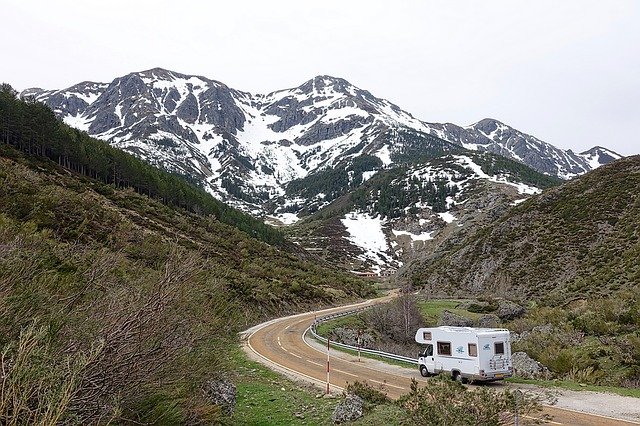
You may be asking “What the heck is he talking about?” so a quick definition is called for here. “Bugging Out” is the act of packing up your supplies and leaving home to go to another location. This may or may not coincide with the belief that you will never come back.
A common example for Bugging Out is people who are forced to leave town due to a natural disaster like flooding or a Hurricane. They pack up their cars and get out of dodge. This is one of the reasons FEMA and other places recommend having a Bugout Bag or BOB with supplies that will keep you alive for 72 hours so that you can leave at a moment’s notice.
Bugging In or Hunkering Down is the complete opposite of Bugging Out. When you Bug-In you are staying put in your home with your supplies intending to ride out the storm of chaos that is coming. Thus the question is asked in preparedness circles usually in the context of political, biological, or terrorist types of chaos: “Will you Bug out or Hunker down?”
To answer this for yourself, you have to ask several questions to determine which is the better option for you in your circumstance. The questions are pretty basic and revolve around:
Your Situation – can greatly affect the decision to Bug-Out or not. How bad would things need to get before you made that call? What if you are away from home? What will your family do until you arrive? Is it the middle of winter and there is 2 feet of snow on the ground? Do you have a means of defending yourself and your family?
Your Health – Are you physically able to get up and strap a backpack to your back, walk out the door and never come back? Would you be able to run if needed? Do you require medication that must be refrigerated or taken daily?
Your Dependents – Even healthy children below the age of 10 would have a tough time coping with a Bug-Out situation if the event lasted a long time and there was no stability. Are you pregnant? Do you have pets that you would never leave in a million years?
Your location – Do you live in a place that would allow you to live if the grid came crashing down tomorrow? Could you plant a garden, or do you live in a high-rise apartment in Chicago? Would you possibly need to walk with millions of other people out of the city?
The threat – This one may be the easiest to answer but you will most likely have more than one answer given the specific threat. Has your city descended into chaos with riots and fires and mobs of people looting?
Your destination – Where are you heading? Do you have a place to go with a survival kit filled with supplies to last you? Will you pack up the family, load up the car, and hit the highway? Where will you go?
Taking all of the criteria above into consideration, I think for the average person with no place to go Bugging in is the best option. You will not be able to walk into the forest, shoot a few deer and squirrels and live like a boss. That simply isn’t happening for the “average” person. For one thing, you won’t be alone. There could be millions of others with you too.
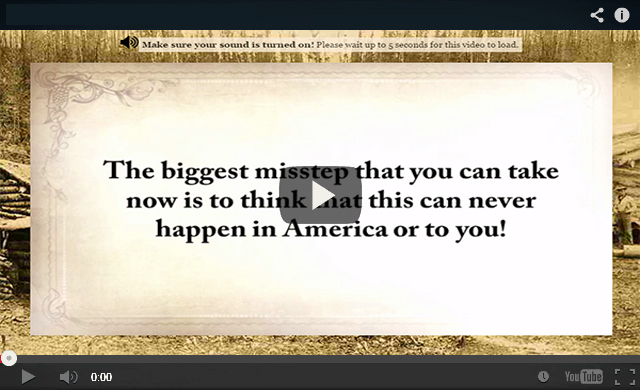
I have thought long and hard on this question and I know that if circumstances in my life were different I would most likely have a different answer. As it stands now, my vote is for Bugging In. I have all of my supplies here and we live in a relatively rural area.
I am not naïve to believe that we would be insulated from the chaos but I think we would have a better chance here with some shelter as opposed to walking in the woods sleeping under a tarp. As much as I like camping, a home is a better place to defend.
Could that change tomorrow? Sure it could. I am constantly evaluating my situation and when things change, my plans change.
Next Steps
Even though this article was probably longer than you were hoping for, we are really just scratching the surface. That said, if you have the items above covered, then you are well on your way to being prepared to handle most of what life can throw at you disaster-wise.
source : Pat Henry



